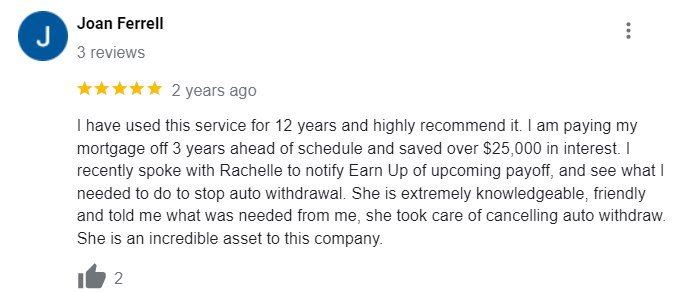When multiple credit cards are weighing you down, it’s natural to wonder “Which Credit Card Should I Pay Off First?”. Getting out from under credit card debt can feel like climbing a mountain, but with a clear plan, you can finally start making progress and slashing those pesky interest charges.
In this post, we’ll explore the factors you should consider when deciding which credit card to pay off first. We’ll also discuss different repayment strategies and how to maintain healthy credit habits going forward. By the end, you’ll have a clear understanding of how to approach your credit card debt and make the best decisions for your financial future.
Which Credit Card Should I Pay Off First?
The burden of multiple credit cards can be overwhelming, especially when each one has its own distinct balance and interest rate. So, how do you determine which card to pay off first, and finally start digging yourself out of debt?
Admitting credit card debt is the first step to recovery. Getting stuck in a vicious cycle of minimum payments and compound interest can be overwhelming, especially when faced with a principal balance of over $20,000 spread across four credit cards. However, by focusing on one card at a time, it’s possible to slowly regain control and eventually pay off the debt.
Credit card debt getting you down? Let’s get one thing straight: you need a solid plan to tackle that debt. We’ll show you how to choose which credit card to pay off first, then explore some winning repayment strategies and simple habits to keep your credit score on track.
Factors to Consider
Got multiple credit cards with outstanding balances? To start tackling that debt, take a closer look at each card to determine which one to pay off first.
- Interest rates (APRs) on each card.
- Outstanding balances on each card.
- Promotional offers or balance transfer opportunities.
When crafting a plan to tackle your debt, consider two strategies: either zero in on the card with the highest interest rate to save big on interest charges, or knock out the one with the smallest balance to score a quick win and build momentum.
Different Repayment Strategies
For those juggling multiple credit cards, debt can feel overwhelming. Fortunately, there are two proven approaches to consider: the avalanche method, which prioritizes high-interest cards, and the snowball method, which tackles smaller balances first.
The avalanche method involves attacking the card with the highest APR first, while paying minimums on the others. Mathematically, this approach will save you the most on interest over time.
The snowball method, on the other hand, has you pay off the card with the smallest balance first. While you may pay more in interest, the psychological boost of knocking out a whole card can be incredibly motivating.
“I’m a big fan of the debt snowball method. Paying off that first credit card gave me such a sense of accomplishment and motivated me to keep going. Before I knew it, I was debt-free.” – Sarah, former credit card debt survivor
Maintaining Healthy Credit Habits
Credit card debt got you down? Shake things up by implementing fresh credit habits that’ll have you saying goodbye to debt and hello to financial peace of mind.
- Keep your credit utilization below 30% (meaning use less than 30% of your available credit).
- Make all your payments on time.
- Avoid taking on new debt while paying off the old.
- Monitor your credit score regularly.
By following these guidelines, you’ll be on your way to debt freedom and a stellar credit foundation. A good credit score is the key to snagging low-interest rates on future loans and credit cards.
Understanding Your Credit Card Debt
Facing your credit card debt head-on requires taking stock of your financial situation. It’s time to pore over those credit card statements, add up the numbers, and commit to making a change.
Assessing Your Financial Situation
Start by making a budget. List out all your monthly income and expenses. Be honest with yourself about where your money is going. This will give you a sense of how much extra you can realistically put towards your credit card payments each month.
Taking a close look at expenses can be an eye-opening experience, revealing just how much is being spent on things like eating out and shopping. By cutting back in these areas, it’s possible to free up a significant amount of money each month, which can then be put towards debt repayment.
Listing Your Credit Cards’ Balances and APRs
Next, make a list of all your credit cards, including the current balances and interest rates (APRs) for each one. You can find the APR on your monthly statement or by logging into your online account.
Facing a sea of numbers can be disorienting, but it’s a crucial step. Once all the debts are laid out, the reality of the situation becomes clear.
Card A: $5,000 balance at 22% APR
- Card B: $8,000 balance at 18% APR
- Card C: $3,000 balance at 15% APR
- Card D: $4,000 balance at 20% APR
Yikes, right? But having this information allowed me to make an informed decision about which card to focus on first. In this case, Card A had the highest APR, so it made sense to prioritize that one to save on interest charges.
Keep in mind, your credit utilization ratio (the amount of credit you’re using compared to your credit limits) is a key factor in your credit score. Aim to keep your utilization below 30% on each card and overall to maintain a healthy score.
Strategies for Paying Off Multiple Credit Cards
Okay, so you’ve assessed your debt situation. Now it’s time to choose a repayment strategy and make a plan of attack. Let’s dive into the two most popular methods: the avalanche and the snowball.
The Avalanche Method
The avalanche method, also known as debt stacking, involves focusing on the credit card with the highest interest rate first, while making minimum payments on your other cards. Once the highest-APR card is paid off, you move on to the next highest, and so on.
Paying off multiple credit cards can be overwhelming, but the avalanche method is the clear winner when it comes to saving money on interest. By tackling your credit cards with the highest interest rates first, you’ll pocket more cash in the long run.
The Avalanche Method is the fastest way to pay off debt, but it’s not always the most motivating. Attack your highest interest rate debt first while paying the minimums on the rest. #DebtFreeJourney #DebtFreeCommunity pic.twitter.com/1cjzQs1J5I
–The Savvy Couple (@TheSavvyCouple) April 20, 2021
The Snowball Method
Picture this: you’re staring down a pile of credit cards, each one flaunting its pesky balance. The snowball method is your ace in the hole. You tackle the smallest balance first, and then move on to the next, picking off those cards one by one. The thrill of victory fuels your momentum, driving you to pay off the next card, and the next.
Paying off that first card gives you a real sense of progress and achievement. And as you roll the payment from each paid-off card into the next one, your “snowball” grows, accelerating your debt payoff.
The snowball method may cost you a bit more in interest compared to the avalanche. But for many people, myself included, the psychological boost is worth it. Seeing those smaller balances disappear kept me fired up to keep going.
Using a Balance Transfer Credit Card
Another option to consider is transferring your high-interest credit card balances to a balance transfer card with a 0% introductory APR. This can give you a reprieve from interest charges for a set period, often 12-18 months, allowing you to pay off your debt faster.
Just be aware that most balance transfer cards charge a fee (usually 3-5% of the amount transferred). And it’s crucial to pay off your full balance before the 0% period ends, or you’ll be hit with high interest charges on the remaining balance.
To conquer credit card debt, align your repayment strategy with your motivational style. Do you thrive on bite-sized triumphs or steady savings growth? By embracing a strategy that resonates with you, you’ll be more likely to persevere through the long haul. And make no mistake – paying off credit card debt is a long-distance endeavor.
Unfortunately, the content you’re referring to isn’t visible in your message. Could you please provide the specific text or details that need revision? This will help me give you the best possible assistance.
How to Calculate Which Credit Card to Pay Off First
Ready to break free from credit card debt? First, you need a smart plan of attack. Figuring out which card to pay off first is crucial – it can make all the difference in getting back on track.
Staring down a stack of credit card bills can be overwhelming, but with the right repayment strategy, you can take control. Let’s break down the most effective ways to tackle multiple credit cards and get back on track.
Paying More Than the Minimum
One of the biggest mistakes people make when trying to pay off credit card debt is only making the minimum payment each month. While it may seem like you’re staying on top of your bills, you’re actually just treading water.
Minimum payments are designed to keep you in debt for as long as possible. The bulk of your payment goes towards interest, with very little going towards the actual balance. If you want to make real progress, you need to pay more than the monthly minimum due.
Even an extra $50 or $100 per month can make a significant difference in how quickly you pay off your debt. It may require some sacrifices in other areas of your budget, but it’s worth it to become debt-free faster.
Carving Out Your Budget
The path to paying off your credit card balance starts with a solid understanding of your spending habits. Break down your expenses into needs (rent, utilities, food) and wants, then pinpoint areas where you can reallocate funds towards your card payment.
Then, see how much money you have left over. Be ruthless in cutting out unnecessary expenses like subscriptions, dining out, and entertainment. The more you can trim from your budget, the more you can put towards your debt.
Once you have a clear picture of your finances, decide on a set amount that you can dedicate to paying off credit cards each month. Treat it like any other bill and make sure it gets paid on time.
Selecting the Right Repayment Strategy
Now that you know how much extra you can pay each month, it’s time to decide which credit card to pay off first. There are two main methods to choose from: the debt avalanche and the debt snowball.
Knock out your debt with the debt avalanche method, where you tackle the card with the highest interest rate first, making minimum payments on the rest. This strategy saves you the most cash in interest over time.
The debt snowball method, on the other hand, has you pay off the card with the smallest balance first. Once that’s paid off, you roll that payment into the next smallest balance, and so on. This method gives you quicker wins and can help keep you motivated.
There’s no right or wrong answer when it comes to choosing a repayment strategy. It ultimately comes down to your personal preference and what will keep you on track. The most important thing is to stick with it and keep making progress, even if it’s slow going at first.
Tips for Maintaining Healthy Credit Habits
Getting rid of credit card debt is a huge milestone — but the real challenge begins afterward. Staying on track means cultivating healthy financial habits to avoid falling into the same trap again.
Closing Credit Card Accounts
It may be tempting to close out credit card accounts once you’ve paid them off, but that can actually hurt your credit score. Part of your score is determined by your credit utilization ratio, which is the amount of credit you’re using compared to your total credit limit.
Closing accounts lowers your total available credit, which can cause your utilization ratio to spike. Instead, keep the accounts open but cut up the physical cards or hide them away so you’re not tempted to use them.
If a credit card account has an annual fee and you don’t plan on using it anymore, then it may make sense to close it. Just be strategic about which accounts you close and when.
Spending Responsibly
Achieving debt freedom is just the first step — now it’s crucial to avoid slipping back into those old spending habits. Create a budget that works for you and only charge what you know you can settle in full each month.
If you do use credit cards for convenience or rewards, treat them like cash. Don’t charge more than you have in your bank account, and pay off the balance as soon as the statement closes. That way, you avoid paying interest and stay in control of your spending.
Stay on top of your money game by tracking your expenses regularly. With so many user-friendly budgeting apps and tools out there, it’s easier than ever to pinpoint areas where you might be overspending and make adjustments accordingly.
Saving for Other Financial Goals
The day you finally shed that credit card debt is a major victory. Now, take the money you were pouring into those payments and channel it into securing your future — think emergency fund, retirement savings, or other crucial financial goals.
Having a rainy-day fund in place can be a lifesaver. Aim to save 3-6 months’ worth of living expenses, so you’re prepared for anything life throws your way — from unexpected car repairs to sudden job loss.
If your employer offers a 401(k) match, make sure you’re contributing enough to take full advantage of it. That’s free money that can really add up over time. If you don’t have an employer-sponsored plan, consider opening an IRA to reduce your credit card debt and convert credit payments to savings.
Celebrating debt freedom is a major accomplishment, but it’s only the first step. Next, you need to cultivate good habits to maintain your financial momentum. Regularly checking your credit score and understanding your credit card balance interest rates will help you stay on track.
When tackling multiple credit cards, prioritize the one with the highest interest rate or smallest balance first. Treat it like any other bill by dedicating a set amount each month. Cut out unnecessary expenses to make way for debt repayment, just as you would make sacrifices to reach a long-term goal. This approach can give you life-changing momentum.
FAQs in Relation to Which Credit Card Should I Pay Off First
What is the best order to pay off credit cards?
Imagine your credit cards are a line of creditors waiting at your door. Paying off the one with the highest APR (annual percentage rate) first makes sense, like dealing with the most demanding creditor first. The debt avalanche method helps you prioritize, tackling the card with the highest interest rate first.
Which two credit cards should I pay off first?
Think of your credit cards like unruly kids in a classroom. Identify the two cards with the highest balances or the most suffocating interest rates. Pay those off first, and you’ll breathe a sigh of relief, just like restoring order in that classroom.
Is it better to pay off one credit card or reduce the balance on two?
Picture your credit cards as mountains to climb. If you can pay off one card entirely, you’ll eliminate the burden and free up resources to tackle the next card. But if that’s not possible, reducing the balance on two cards can still give you a sense of progress, like taking smaller steps up the mountain.
When paying off credit cards, what is the best strategy?
Think of your credit card debt as a puzzle to solve. The debt snowball method prioritizes cards by balance, while the debt avalanche method focuses on high-interest rates. Choose the approach that works for you, or mix and match to find the strategy that helps you pay off your debt and conquer the puzzle.
Conclusion
Deciding which credit card should I pay off first is a critical step in taking control of your finances and reducing your debt. By assessing your financial situation, understanding your credit card balances and interest rates, and choosing the right repayment strategy, you can make significant progress toward becoming debt-free.
Gaining control over credit card debt takes time, effort, and determination. But the payoff is worth it – a lighter financial load, more peace of mind, and a brighter future for you and your family.
The journey begins now. Define your objectives, prioritize your tasks, and tackle them one by one. Remember, it’s not about the grand gestures; it’s about the consistent effort that pays off in the long run.
With the right mindset and the strategies you’ve learned in this post, you have the power to conquer your credit card debt and create the financial life you’ve always wanted.










